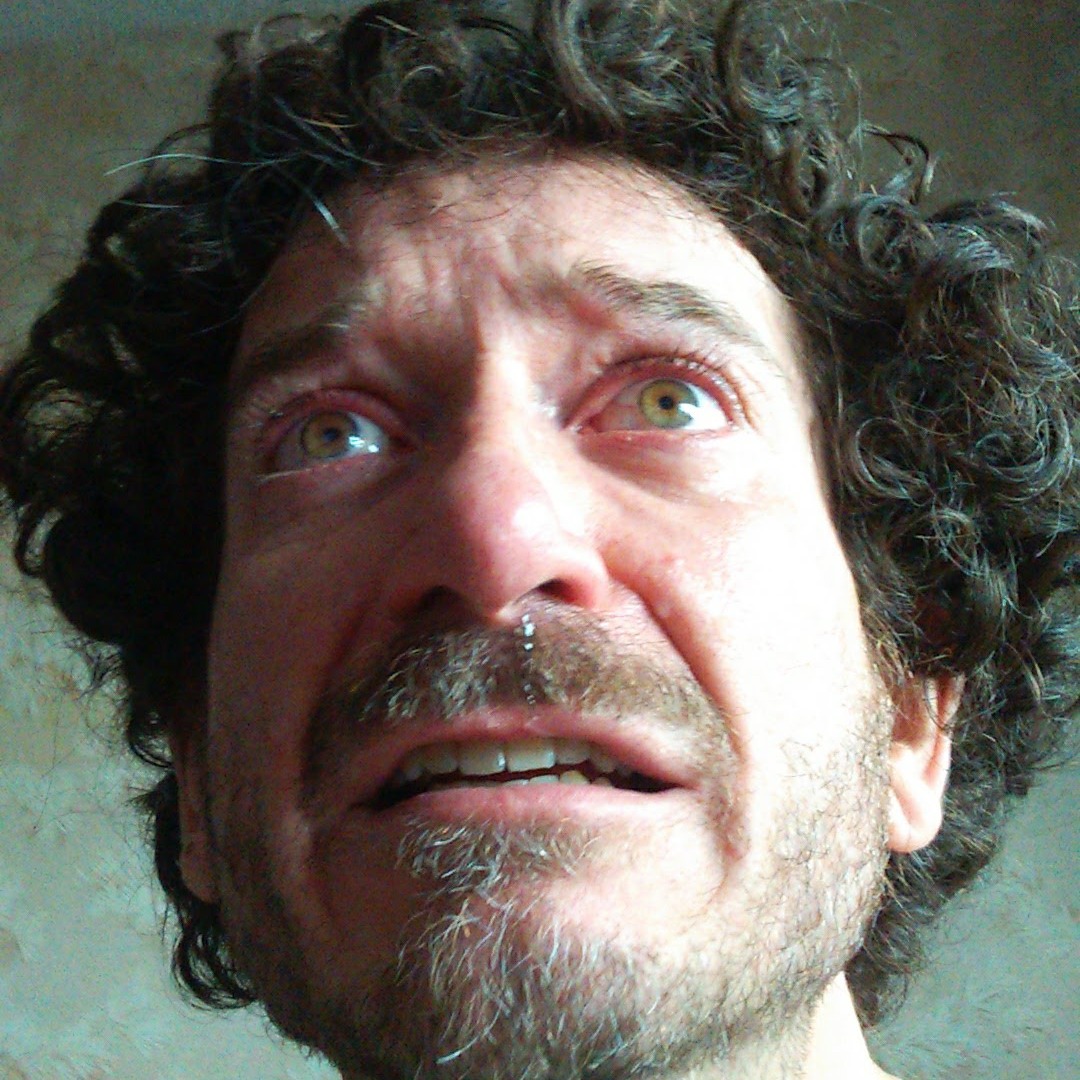First of all, that’s great news.
Secondly, the potential Black Mirror twist on this is that giant corporations figure out that it’s cheaper to pay gig workers to grow them in implanted pockets with immune privilege under the skin.
Did technology go wrong, or did humanity already go wrong, and tech just helps us express it?
Wet, breathy wheezing. A hospital bed, lit by flickering fluorescents. A man is strapped down. His belly undulates unnaturally, bulging in sharp ridges. He screams. We hear cracking.
Surgeon’s POV cam: the skin splits. Dozens of human teeth, yellowed, twisted, many with roots, erupt from inside. A molar rolls down his side and hits the floor.
Dr. Mira Salgado once dreamed of creating self-repairing smiles. OroGene Biotech made that dream real. But when her perfected method proved too costly, the execs came up with a shortcut: grow the teeth inside people. The logic was horrifyingly elegant:
• Human bodies are warm, self-healing, incubators.
• With surgically implanted growth-matrix mesh, teeth can be cultured in fatty tissue.
• Gig workers are paid per viable tooth.
Mira protested. They showed her the numbers:
• $10,000 per lab-grown tooth.
• $87 for human-grown.
She signed the NDA.
We meet Jared, 37, former miner. He hosts 14 growth pods in his abdomen, thighs, and back. Each pod is lined with a bio-plastic mesh, an artificial “womb” for teeth. The camera shows his daily ritual. Peeling back gauze to reveal inflamed, raised flesh. Teeth shifting visibly beneath the skin, like parasites squirming. One pod is leaking. He pokes at it. A canine bursts through the skin with a sickening pop. He cries, holding it in shaking fingers. The tooth has tiny black veins. It’s rejected. No payout.
Mira secretly visits a hosting facility. One worker’s torso is deformed, as though swallowed from within. Another’s face is distorted, with teeth having migrated and rooted inside his cheek muscle. A woman sobs as a dentist extracts six fused molars from her spine. Sonya, 21, is pregnant and in Phase IV. OroGene promised her a full payout if she took a rare “cranial site.” Teeth are growing in her jaw, palate, and sinuses. She can’t eat solid food. Her nose bleeds constantly. One day she sneezes, and a bloody baby tooth falls into her hand. She starts keeping the teeth. She names them.
Mira tries to leak the files. No outlet will take them. OroGene owns most media ad contracts. Meanwhile, the company spins hosting into a movement: “Toothshare” “Let your body work for you. Give the world a better smile.” They introduce “SmileScore,” a performance tracker. Workers compete for bonuses. Some mutilate themselves to open new “pockets.” Others inject bone growth hormones to boost yields. Their skeletons begin to warp. Jared’s body starts rejecting the mesh. His immune system is attacking his own nerves. He can barely walk. OroGene denies coverage, claiming “protocol violation.” He tries to cut one of the pods out. Instead, he severs an artery. He dies alone, soaked in blood and teeth. OroGene uses his photo in a memorial ad: “He gave his body for better smiles. Smile forward.”
Sonya goes into labor. There are complications. She hemorrhages. Her child is born still, but not without teeth: twenty of them, embedded in its gums, chest, eyelids. The nurses scream. OroGene arrives within the hour and seizes the body. Mira finds Sonya in post-op. She’s awake. Catatonic. “They said I grew too many,” she whispers. “They took him for harvest.” Mira snaps. She injects herself with the mesh. She becomes the leak. She live-streams the pain, the infection, the deformations. She cuts herself open on camera to extract a malformed incisor, screaming. The footage goes viral. But people don’t turn away. They watch. They share. Some are horrified. Others are intrigued. Three months later, OroGene introduces a new product: Host Yourself™ for influencers and lifestyle enthusiasts. Grow your own smile. Be part of the biotech revolution.
At a dental clinic: Clean. Quiet. White marble floors. Artificial sunlight streams in through skylights. The receptionist is a soft-spoken AI. A young girl, no older than 10, sits in a chair. Her parents, wealthy, detached, are talking to a clinician. Clinician: “Thanks to the donor program, your daughter’s teeth will be organic, not synthetic. Real roots, real growth. A perfect smile for a perfect future.” Cut to: the girl reclined in a surgical chair. A dental robot whirs to life, fitting a tray of freshly grown teeth into her mouth. Her jaw spasms. The gum tissue bleeds slightly as the teeth sink into place. She winces, but her mother claps. “So brave.” As the clinicians fuss, the girl glances toward the bio-tray that held the teeth. Each tooth is labeled. One still has a blackened root. The name on the tray: Sonya B - Batch 46-III. The girl looks at herself in the mirror. Her new smile gleams, too wide, too white, too many teeth. She starts to cry. Her mother shushes her gently: “No more tears, sweetheart. You’re beautiful now.”
Christ on a bicycle this reads just like a Black Mirror ep.
That and The Twilight Zone are my favorite, any surreal TV anthology, really.
Edit: Also, it’s unlikely he rode a bicycle. They’re not mutually exclusive, but he preferred driving his Honda. He just didn’t like talking about it.
Well that was horribly well done.
Nightmare fuel is my favorite. That’s primarily why I read the news.
Well your username checks out, in a horrible and all too believable way. Are you an actual biopunk writer, or do you just like making strangers on the internet gag on their cereal? It was viscerally well done, either way
No, I’m not a writer. I just like imagining hyperbolic situations on the fringes of reality. You’ve inspired me. Making someone do a spit take with cereal is now on my bucket list.
If you’re not sending manuscripts to publishers, please consider doing so.
Relevant username.
Thanks for remembering.
The more technology advances, the more convinced I become that capitalism should not be let anywhere near it
The more technology advances, the more convinced I become thatcapitalism should not belet anywhere near itAgreed
I like the way you think.
Being the menshevik that I am, I would think that it’s OK to let little small time capitalists play with their sand toys, let them set up little lemonade stands and juice carts and little tavernas and what have you, so long as they’re not anywhere near society’s critical path. Low tech, low impact stuff is OK.
I’m on board with that. I’d argue that’s the difference between capitalism and commercialism, but I also don’t want to split hairs when we already agree on which direction we’d like things to go.
Sometimes organs and stuff are kept under the skin. Very weird looking.
This is not the bedtime story I was looking for, but thank you for your contribution.
It would replace dental implants, not fillings but pretty sure it would be more expensive and slower
Yeah, of all the things to replace with a prosthetic, a tooth seems easiest. We can make a thing hard and strong very easily. That being said, the article says prosthetic don’t last for some reason.
A good dental work can last for 10 or 20 years (ceramic crown or onlay) but the mouth is a very complicated part and many factors, mechanical and biological, come into play.
Other than abrasion, what are some of them?
Force, neglect, drug and tobacco use and other abuse, poor diet, poor circulation, trauma, probably more.
drug and tobacco use and other abuse, poor diet, poor circulation
Can those affect a synthetic implant, somehow?
Gum and bone tissue.
looking forward to teeth growing in my eyeballs
Mmmmm seefood
Well, that got a laugh out of me.
that is so cursed
Your daily reminder that access to healthy teeth is vital to cardiovascular and neurological health making this an essential human right: https://www.health.harvard.edu/diseases-and-conditions/gum-disease-and-the-connection-to-heart-disease / https://www.nia.nih.gov/news/large-study-links-gum-disease-dementia
deleted by creator
I worry this will be suppressed and not allowed to reach the common man like those tooth regrowing pills
I thought we had left all conspiracy theorists at Reddit?
Will anyone be able to afford this?
Been hearing this since the early 90s.
Yeah seems to come along every so often, I wonder if we will ever see it in our lifetime as an actual option. Presumably minor things fillings make more sense but serious work would be better to remove and regrow.
Japan is just growing them in the persons mouth though. I thought at least.
How soon? I have one I’ve been neglecting…
Same, I’m kinda holding out because I heard that tooth regrowing drug entered human trials and mine aren’t that bad yet.
I’m just genetically missing more than one, lol.
It’s currently in human trials. That’s a lot closer than we’ve ever been.
https://www.japantimes.co.jp/news/2024/08/23/japan/science-health/teeth-regrowth-trial/








